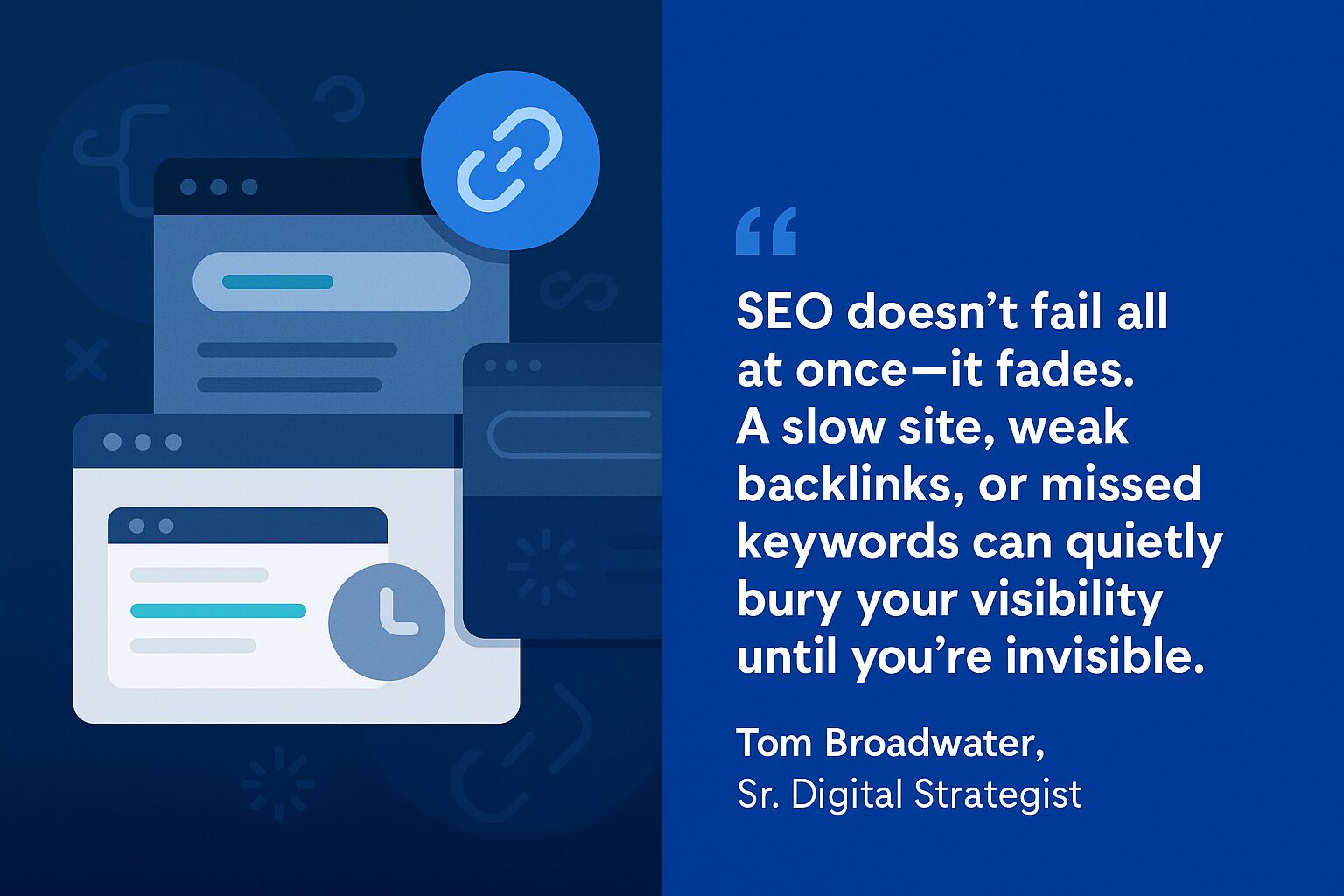TL;DR:
-
Ensure Google Can Crawl and Index Your Site: Submit your sitemap, remove any unintended “noindex” tags, and check your robots.txt so important pages aren’t blocked from search engines.
-
Target the Right, Realistic Keywords: Focus on long-tail, buyer-intent phrases your audience actually searches. Skip jargon and overly broad, competitive terms.
-
Optimize On-Page Elements for SEO and UX: Use one H1 per page with keyword-focused headlines, write unique meta titles and descriptions, add internal links, and include descriptive image alt text.
-
Improve Site Speed and Content Quality: Compress images, minimize scripts, and host on a fast, secure server. Create in-depth, educational content to demonstrate authority and give Google more to rank.
-
Build Authority with Inbound Links: Earn backlinks from reputable sites through guest posts, PR, and thought leadership to boost your credibility and climb rankings.
You’ve invested in your website. The content is solid, the branding is on point, and your team is promoting it through campaigns and social media. But when you Google your company, or your latest blog topic, you’re nowhere to be found.
It’s frustrating. Especially for marketing managers in manufacturing, who are tasked with supporting long sales cycles and complex buying decisions. Your website should be your strongest inbound tool. But if it isn’t visible in search, it’s not even in the conversation.
Let’s break down why your site isn’t ranking and what you can do to start showing up where it matters.
First: Why Search Visibility Matters More Than Ever
In manufacturing, decision-makers are self-educating long before talking to sales. If your company doesn’t appear in search when they’re comparing vendors, researching specs, or evaluating solutions, you’re out of the running before you’ve even had a chance.
Good search visibility supports:
- Inbound lead generation
- Higher trust and authority
- Better campaign performance
- Lower dependence on paid channels
And the best part? Once your SEO strategy is working, it delivers results over time without constant ad spend.
7 Reasons Your Website Isn’t Showing Up in Search
Let’s unpack the most common reasons your content and pages are invisible to the people who need them.
1. Your Site Isn’t Being Indexed
If Google can’t crawl and index your site, it won’t show up no matter how good the content is.
Fix it:
- Submit your sitemap to Google Search Console
- Check for “noindex” tags in your page settings
- Make sure robots.txt isn’t blocking important pages
2. You’re Targeting the Wrong Keywords
Too often, B2B marketers aim for broad, highly competitive terms or use internal language buyers don’t search for.
Fix it:
- Use tools like SEMrush, Ahrefs, or Google Keyword Planner to find realistic, high-intent terms
- Target long-tail keywords like “ISO 9001 certified machining vendor” vs. “manufacturing company”
- Include keywords naturally in titles, headers, and meta descriptions
3. Your Pages Lack Optimization
Even great content won’t rank without basic on-page SEO.
Fix it:
- Use one H1 per page with a clear, keyword-focused headline
- Add internal links between related pages
- Include alt text for images (bonus: this helps with accessibility)
- Write unique, compelling meta titles and descriptions

4. Your Website Is Too Slow
Page speed is a confirmed Google ranking factor. A slow-loading site also pushes users away quickly, which hurts performance.
Fix it:
- Compress large images
- Minimize third-party scripts
- Use a fast, secure host with reliable website support
5. You Don’t Have Enough Quality Content
Google prioritizes expertise and authority. If your site only has a few service pages, there’s not much for it to rank.
Fix it:
- Create educational blog content for each stage of the funnel
- Develop product pages with depth, not just bullets
- Answer common questions in your niche (FAQ pages perform well)
6. Your Content Isn’t Structured for Users
Walls of text don’t perform well, especially when readers are scanning for solutions.
Fix it:
- Break content into digestible sections with subheadings
- Use bullet points, numbered lists, and bolded key phrases
- Keep paragraphs short and readable
This not only improves usability, it supports conversion rate optimization as well.
7. You’re Not Building Authority
Search engines favor sites with inbound links from trusted domains. If no one links to you, it’s harder to climb rankings.
Fix it:
- Pitch guest posts to industry blogs
- Promote content through PR and thought leadership
- Link to your own content from social posts and newsletters
Authority is earned over time, but even a few strong links can make a difference.
What You Can Measure to Track Progress
You won’t jump to page one overnight. But by monitoring the right metrics, you’ll know what’s working and what to optimize next.
Track in Google Analytics and Search Console:
- Impressions and clicks for target keywords
- Organic traffic by page
- Bounce rate and time on site
- Backlinks and referring domains
- Conversion rate from organic visitors
This creates a clear line between your SEO efforts and business results.
How 3 Media Web Can Help
At 3 Media Web, we help manufacturing marketers move from invisible to impactful in search.
Our SEO services include:
- Full website audits to identify technical issues
- Keyword research tailored to manufacturing buyers
- Content strategy and optimization for long-term growth
- Technical fixes to improve crawlability, speed, and structure
- Integration with paid search and paid media management to support every stage of the funnel
We don’t just help you show up we help you convert once you do.
